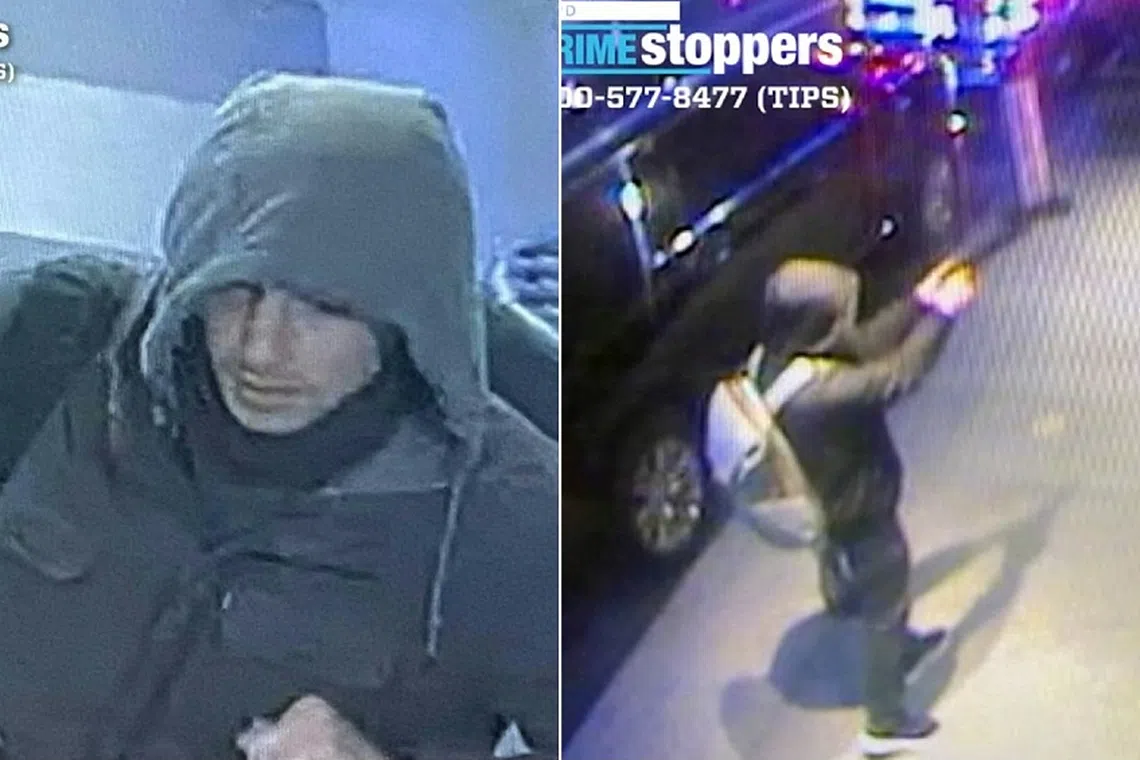What to know about ‘ghost guns’, the weapon used in UnitedHealthcare CEO killing
Sign up now: Get ST's newsletters delivered to your inbox

New York police said the man who killed UnitedHealthcare's CEO used a 9mm “ghost gun” with a suppressor.
PHOTOS: AFP, REUTERS
Follow topic:
The man held in the killing on Dec 4 of UnitedHealthcare CEO Brian Thompson
Luigi Mangione, 26, had a “ghost gun that had the capability of firing 9mm rounds and a suppressor” when he was arrested, New York police chief of detectives Joseph Kenny told reporters on Dec 9.
What are ghost guns?
Ghost guns are unregistered and untraceable homemade weapons.
They usually come in do-it-yourself (DIY) kits and shipped in parts so that buyers can carry out the final assembly themselves.
They can also be made with a 3D printer. Once assembled, ghost guns are fully functioning lethal weapons.
There are kits for a dizzying variety of firearms, including Glock 9mm pistols, AR-15 and AK-47 assault rifles, and shotguns.
What makes ghost guns alluring?
Ghost guns are easy and relatively inexpensive to assemble.
“You can buy a box of firearms parts, and you can assemble those firearms together, and I’ve seen videos on YouTube where you can see people doing it in record time – 20, 30 minutes,” Mr Marvin Richardson, the current deputy director of the US Bureau of Alcohol, Tobacco, Firearms and Explosives (ATF), said in a CBS News report in 2022.
The DIY kits cost less than US$200 (S$270) when purchased in the US, though officials have put the average price at around US$500.
Ghost guns have been around since the 1990s, mostly as an under-the-radar oddity.
They became mainstream in recent years following a torrent of online videos that provided instructions on how to assemble, customise and modify them.
Sellers have also lately been providing blueprints and schematics that allow those with 3D printers to just make the parts themselves.
“Today, people can sit at home in their living room, log on to their computer, access a piece of software, send a signal to their printer, and print out a machine gun that can kill people. That’s a problem,” said Mr John Miller, CNN’s chief law enforcement and intelligence analyst.
Why are ghost guns dangerous?
Ghost guns do not have serial numbers, and the parts used in them are not regulated. This makes them nearly impossible to trace.
The ATF was able to trace fewer than 1 per cent of some 45,000 ghost guns recovered during criminal investigations in the US between January 2016 and December 2021, CBS News reported.
In the US, buyers of DIY kits are not required to undergo background checks or go through a waiting period.
Anyone with the money, time and technical know-how, therefore, can get one of these kits and assemble the same 9mm pistol that Mangione reportedly used.
Ghost guns have become especially popular with those who cannot get a licensed firearm because of a criminal record or a mental health liability.
They have been involved in school shootings, such as the one in Saugus, California, in 2019, where a 16-year-old killed four people.
A ghost gun was also used by a 44-year-old who killed his wife and four others in Northern California in 2017.

Parts of a ghost gun kit on display at an event held by US President Joe Biden to announce measures to fight ghost gun crime in 2022.
PHOTO: REUTERS
What has been the impact of ghost guns globally?
Ghost guns – 3D-printed firearms, in particular – have found their way into the hands of far-right groups in Europe and Australia, and anti-junta forces in Myanmar.
In 2019, neo-Nazi Stephan Balliet used a Luty sub-machine gun with 3D-printed components to kill two people after failing to break into a synagogue in Halle, Germany.
In 2022, four men in Iceland who were arrested for plotting an attack on the country’s environment minister were found in possession of 3D-printed firearms.
In Myanmar, fighters of the People’s Defence Forces have been seen engaging junta troops using the FGC-9 – a 3D-printed, semi-automatic, pistol-calibre carbine.
An Al Jazeera documentary early in 2024 featured a rebel-run machine workshop deep in the jungle of Myanmar with at least six 3D printers producing not just FGC-9s but also components for M-16 assault rifles
An unverified video on YouTube showed pro-democracy fighters, armed with FGC-9s, ambushing a sport utility vehicle and killing junta soldiers inside it in 2022.
Mr Rueben Dass, a senior analyst with the International Centre for Political Violence and Terrorism Research, said in a 2023 study that the threat from 3D-printed firearms “is evolving rapidly”.
He said manuals on how to manufacture these types of weapons are readily available online, 3D printing technology is becoming cheaper, and easier-to-build firearms designs are proliferating.
Metal printing is also likely to become cheaper and more accessible, said Mr Dass.
Are ghost guns illegal in Singapore?
Yes.
Using a 3D printer to produce guns and gun components is prohibited in Singapore.
Possessing digital blueprints that provide instructions on how to print and assemble firearms is also an offence.
Those convicted of manufacturing firearms or gun parts without a licence face jail time of up to three years and a fine of up to $10,000.
Gun possession, meanwhile, is punishable with a three-year prison term and a fine not exceeding $5,000.


